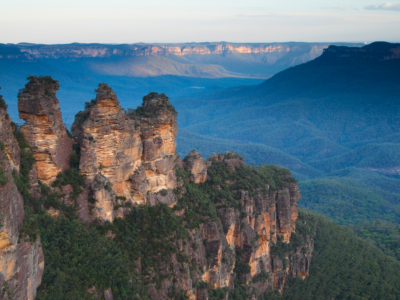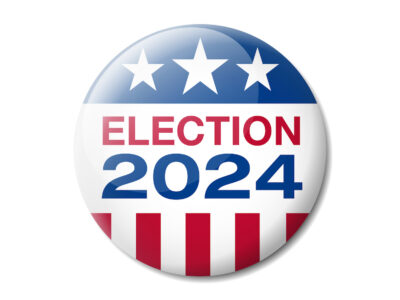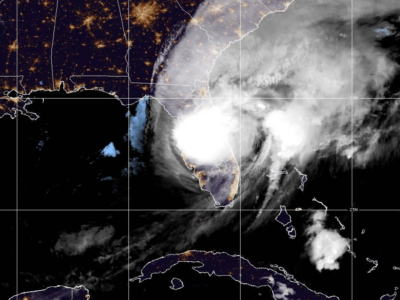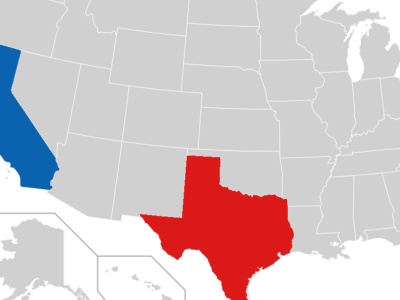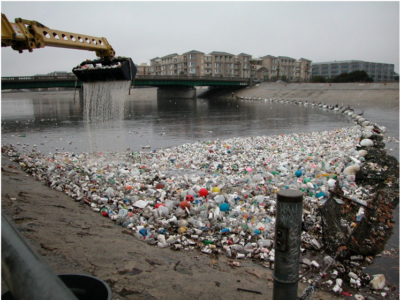How to Make Trees Worth More Standing Than Cut Down
The Katoomba Group is celebrating 25 years of pioneering new approaches to realizing value in nature. Here's what we've learned.
West of Sydney, Australia, lies the Blue Mountains, a range of plateaus and panoramic canyons forested with eucalyptus trees. Oil in the leaves produces a bluish haze, hence the name of the area. Twenty-five years ago, in 1999, a new NGO called Forest Trends brought together a small international group to the town of Katoomba to brainstorm over increasing capital flows to protect nature, how to “make trees worth more standing than cut down.” The gathering came to...
CONTINUE READINGThe Election, Vehicle Emissions, and State Climate Plans
If the California car waiver survives a possible Trump presidency, we may have the overruling of Chevron to thank.
If one single thing about the election keeps state environmental regulators up at night, it’s how much a Trump victory would impact their ability to cut transportation emissions. As it turns out, Trump’s leverage would be reduced, ironically enough, because his conservative Supreme Court appointees helped overrule the Chevron doctrine. Trump can still cause a lot of very harmful chaos, but ultimately the courts will make their own decision about state emission st...
CONTINUE READINGHurricane Milton and this Climate Moment
We're witnessing the collision of extreme weather, climate science, national news and politics. The question of "Who pays for climate disasters?" is about to become even more important.
When President Biden addressed the nation yesterday from the White House, he warned that Hurricane Milton could be one of the most destructive storms in more than a century, but he stopped short of explaining why — that climate change, fueled by our burning of fossil fuels, is making oceans warmer and storms stronger, capable of metastasizing monstrously. It’s understandable for the outgoing president to focus on marshaling the National Guard, Coast Guard, and...
CONTINUE READINGTexas and California Are Not Opposites. Contrary to What You Might Think.
These two states are often portrayed as epitomizing two possible futures. But the differences are more nuanced than you think.
There’s a common idea that Texas and California represent two opposing poles of America. They’re admittedly very different places on many levels. But in some respects, they are surprisingly similar, and some differences aren’t as big as they seem. Let’s begin with politics. It’s true that one part is dominant in each state, but that’s where the resemblance ends. California is almost two-thirds Democratic, so you might think that Texas is probably the o...
CONTINUE READINGArctic Futures: White Shield or Blue Economy
Multiplying proposals for ice restoration face geopolitical obstacles
Ice-thickening. Glacier curtains. Cloud brightening… Proposals for Arctic climate interventions seem to be multiplying by the day. The changing climate is not only shrinking ice caps and ice sheets, but also bringing much greater than average temperature rises in polar regions. These impacts particularly disrupt the lives and livelihoods of Arctic Indigenous Peoples. Arctic impacts are also linked to wider global harms. Total loss of the Greenland ice sheet, for ...
CONTINUE READINGWhy You Should Read CA’s ExxonMobil Plastic Lawsuit
California’s lawsuit against ExxonMobil for lying about plastic recycling is the latest example of the state using old-fashioned legal tools to address more modern harms.
The media have moved on (understandably) from California’s recent lawsuit against Exxon over plastic recycling to other environmental stories like Hurricane Helene’s catastrophic damage and Hurricane Milton’s terrifying, rapid intensification. But anyone interested in the problem of plastic pollution—which should, frankly, be everyone—will appreciate digging deeper than the Day One headlines to read California’s 147-page complaint. The complaint is a c...
CONTINUE READINGWith 4 Weeks Left, the Election – and the Future of Climate Policy – Hang in the Balance
The White House and control of the House remain toss-ups.
Given the stark differences between the perspectives of the two parties, the outcome of the 2024 election will be pivotal for climate and energy policy. With a month to go, things are still incredibly close. Harris has a tiny edge in the electoral college, and the Republicans have a similar edge in the House. I wrote about the Senate yesterday, where Republicans are somewhat favored to win control because the key Montana race is starting to lean Republican. But e...
CONTINUE READINGA Small Win for Curbside EV Charging in California
AB 2427 marks progress for a key charging segment
Late last month, Governor Newsom signed Assembly Bill 2427, which represents a modest step in the effort to ensure all Californians have access to convenient electric vehicle (EV) charging, not just those who own their homes and have garages, by supporting efforts to invest in curbside EV charging. As CLEE described in a report issued earlier this year, curbside charging will be a key tool for residents of dense urban centers, multifamily buildings, and homes that lac...
CONTINUE READINGThe Two Races Most Likely to Determine Control of the Senate
The outcomes will shape environmental policy in the new Congress.
To keep control of the Senate, Democrats must hold on to the White House and two Senate seats in red states. If Republicans win in Ohio or Montana, they are virtually guaranteed to flip the Senate, with important consequences for environmental policy. Here are the candidates in these key races and their views on energy and climate, in their own words. Only one of the candidates emphasizes environment or energy issues in the form of Republican Tim Sheehy’s full-th...
CONTINUE READINGA Good Day to Drop Big Oil
Major league sports teams like to talk about sustainability measures on Green Sports Day, which is Oct. 6. They should do something about their fossil fuel sponsors.
On Sunday, October 6, sports teams throughout the U.S. will participate in something called Green Sports Day, an annual event to promote sustainability in sports. Often, it’s a chance for a franchise to promote the recycling or energy conservation that goes on at its stadium. One thing these teams almost certainly will not be talking about—but should be—is the oil and gas companies that continue to buy influence with American audiences through a wide range...
CONTINUE READING



